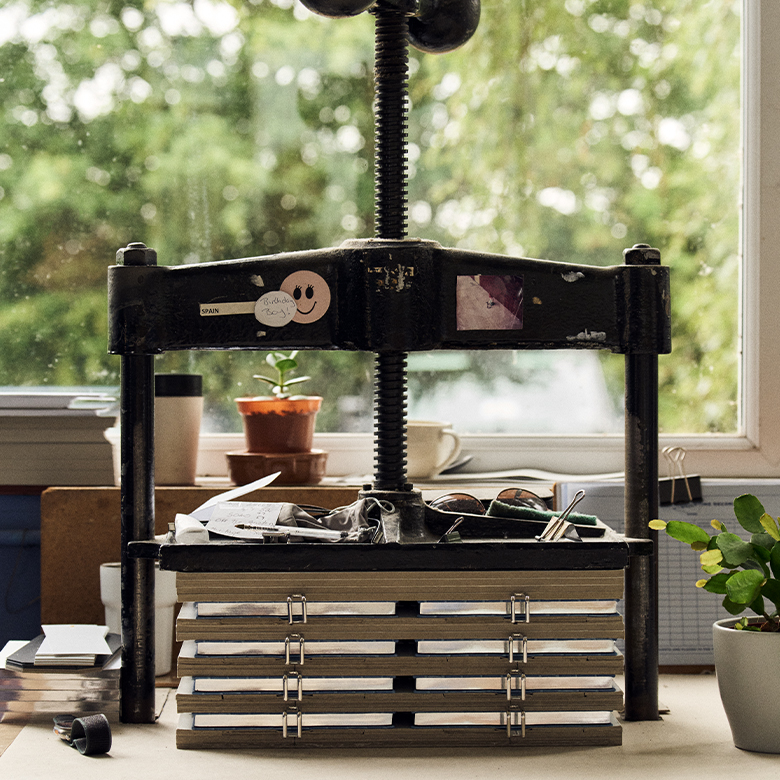DETAILS OF A DIARY
Between the covers of a Smythson diary.
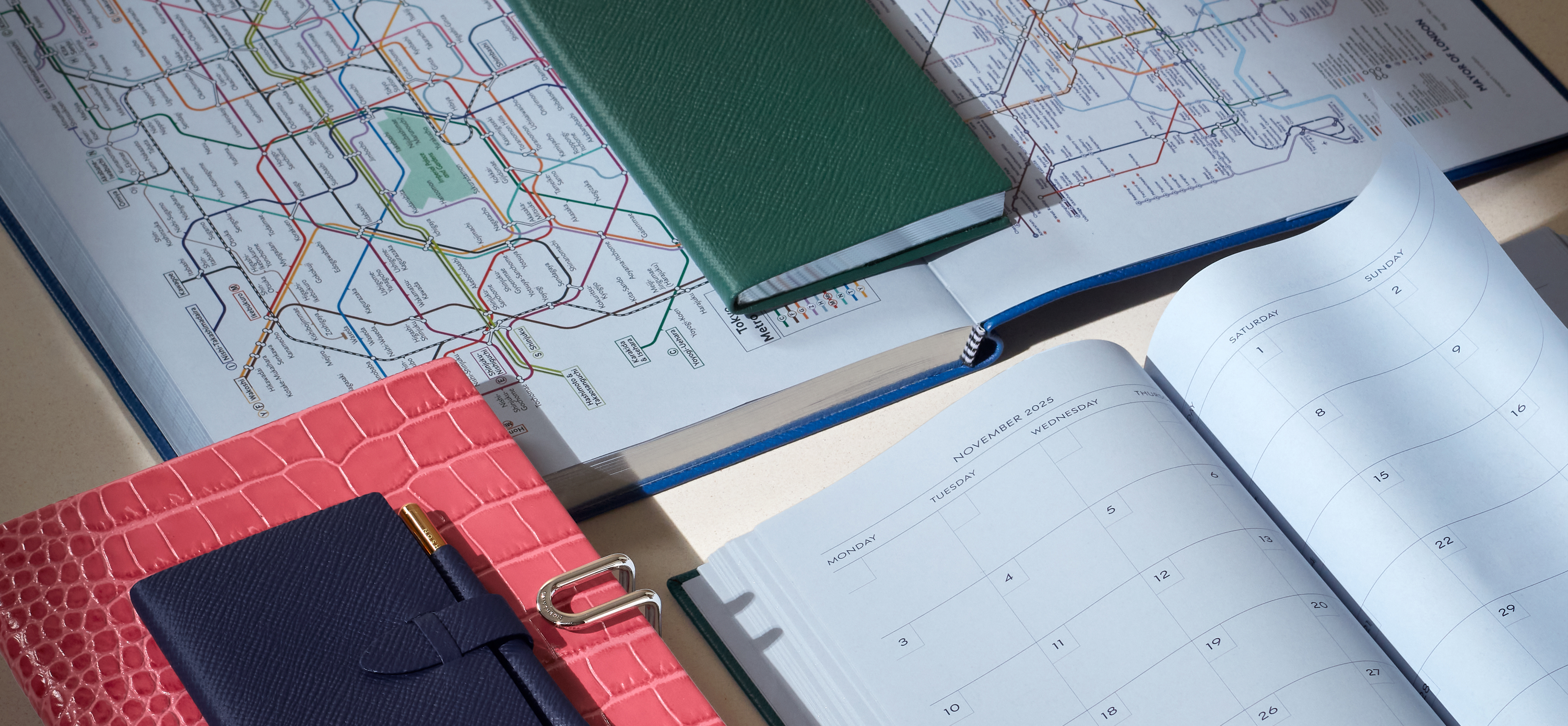
A Smythson diary is more than the sum of its pages; the diaries in our collection today hold over a century of heritage and craftsmanship between their covers. Since Frank Smythson created his first diary in 1908, these time-honoured techniques have endured, passed down through generations of skilled artisans.
Open a diary, and you begin to uncover the details that make it so distinctive – the iconic blue pages, the carefully finished leather-bound covers, and the craftsmanship that transforms paper and leather into a companion for capturing the memories and moments of a life well written.
THE 1908 PANAMA DIARY
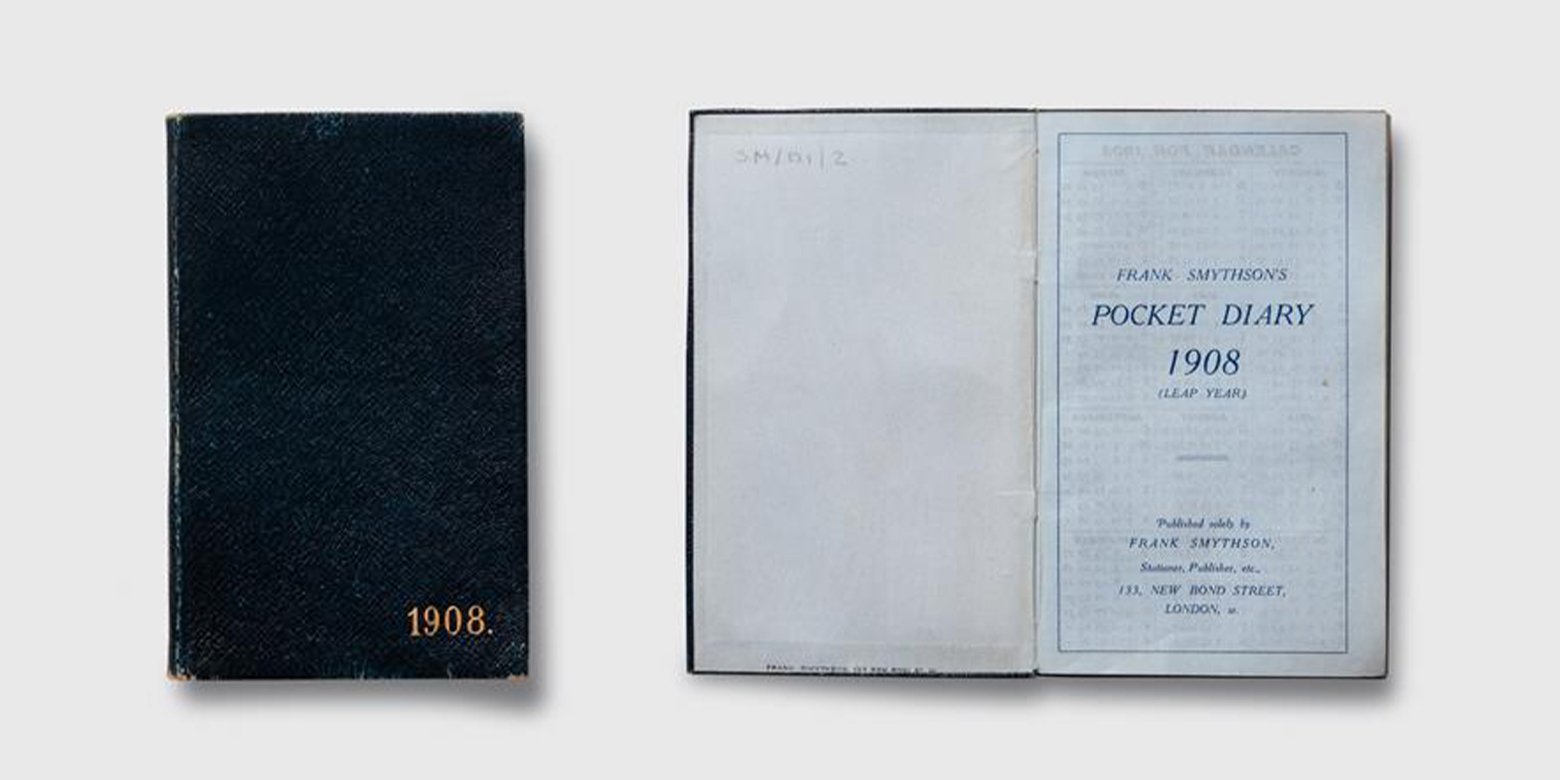
It all started in 1908, when Frank Smythson created the world’s first portable diary: the Panama diary. A distinct departure from the cumbersome desk diaries of the day, the Panama was innovatively designed to accompany everyday life – to slip neatly into a gentleman’s breast pocket “without causing the least disfigurement.” Most notably, it was the first book to use exceptionally lightweight paper, paving the way for what would become our iconic blue Featherweight paper.
THE PAPER
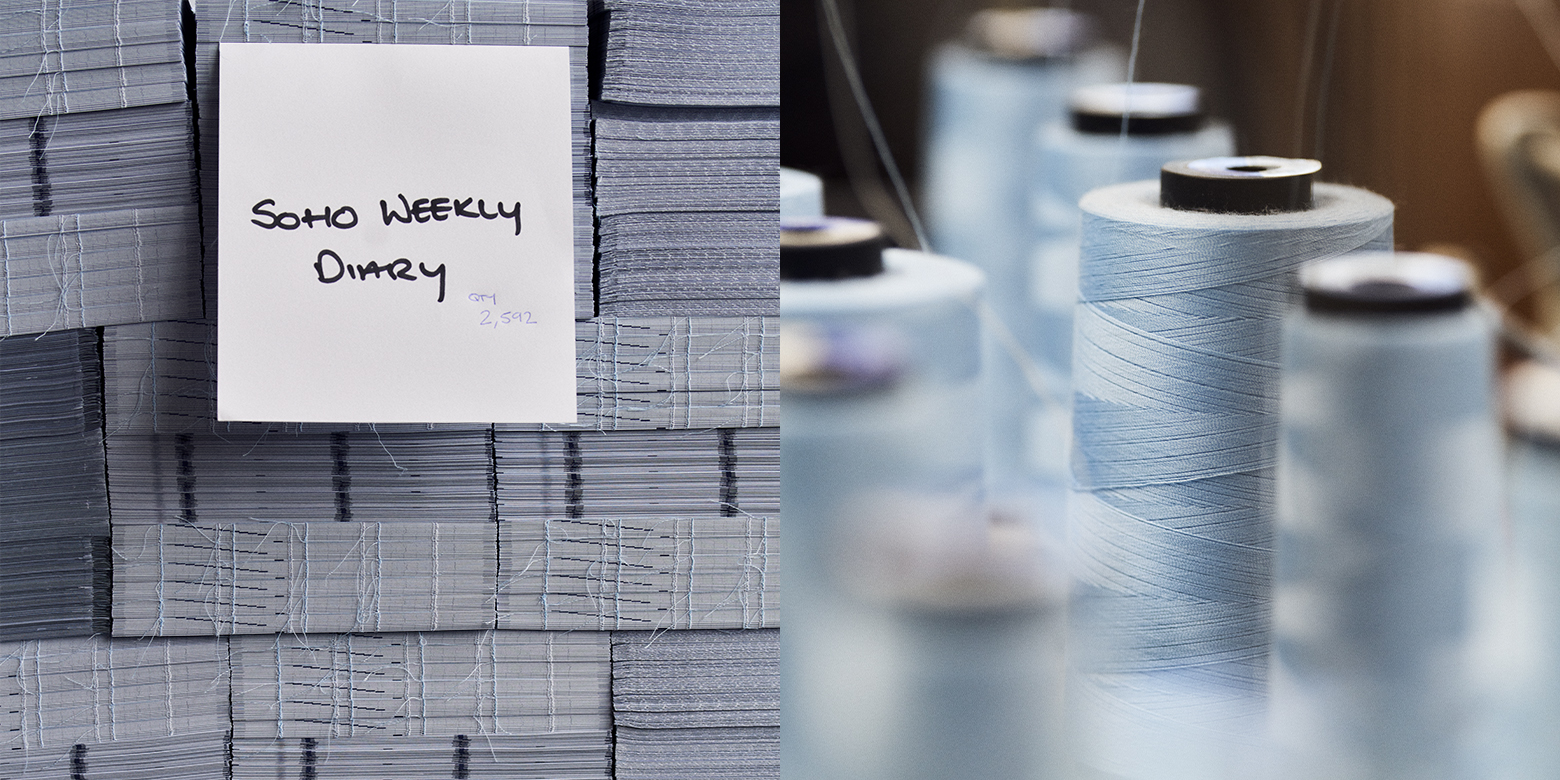
Every diary begins with words. Long before a single page is printed, our editorial team spends months meticulously researching, updating, and verifying every detail within its pages. Only once this content is approved are the printing plates prepared, and the words committed to paper.
Milled in Scotland, our Featherweight paper remains exclusive to Smythson. At just 50gsm – half the weight of ordinary paper – it is exceptionally thin yet remarkably strong, designed to hold ink beautifully without bleed-through. Its whisper-light nature demands the utmost precision; printing, watermarking, and folding each sheet requires true mastery. Our craftsmen often describe it as “folding mist.”
As legend has it, the paper’s distinctive blue hue was born by accident when a pot of ink was once spilt into the pulp. Rather than discard it, Frank Smythson insisted it be used, and customers soon fell in love with its pale blue shade. He went on to copyright the colour in 1916 – a hue that has remained a signature of Smythson ever since.
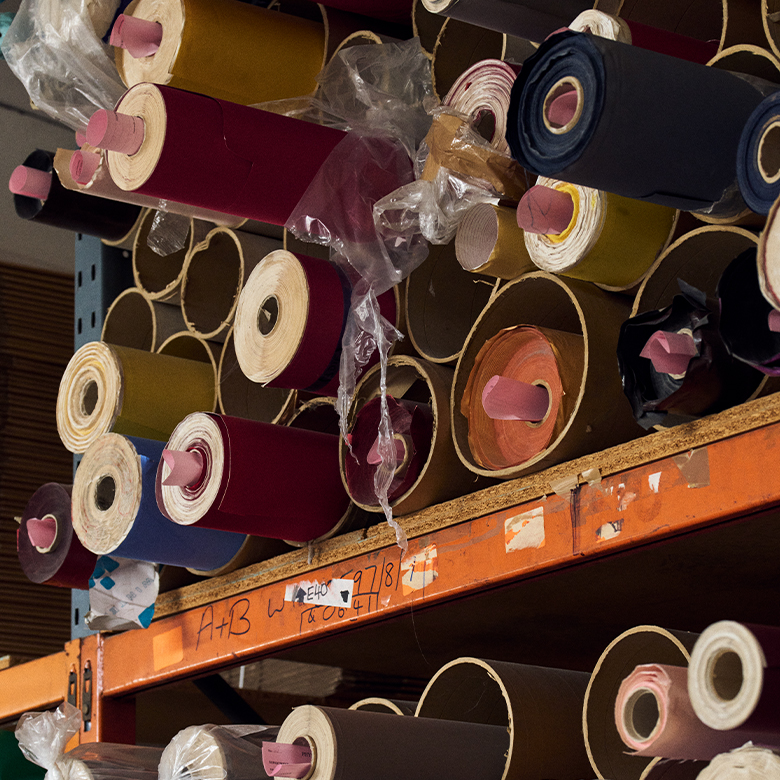
THE LEATHER
In another part of our workshop, the all-important covers begin to take shape. Leather hides in a spectrum of classic and seasonal colours are carefully inspected for marks and blemishes, with only the finest selected for cutting, skiving, and embossing. Distinct textures define our signature leathers – the pliable cross-grain of Panama, the smooth suppleness of Ludlow, the glossy finish of Mara – each chosen for its character and feel. Once cut, the panels are embossed and stamped with the year and our Smythson logo in delicate foil.
THE CRAFT
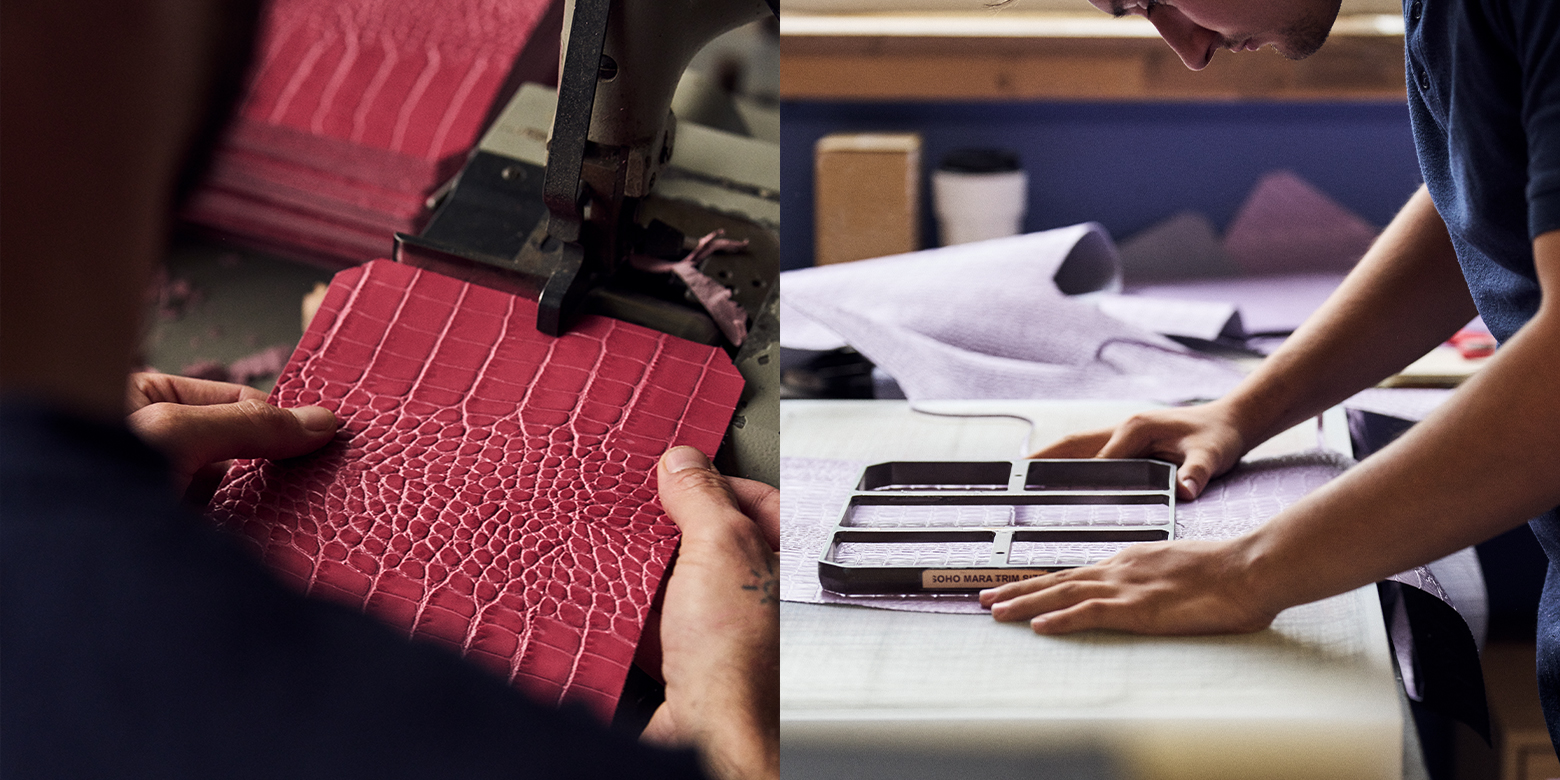
As the paper and leather come together, our storied craftsmanship takes centre stage. Each diary passes through the hands of at least 15 highly skilled artisans, who meticulously hand-finish every detail across 22 separate stages, each as intricate as the last.
Once folded, the paper sections are hand-collated, sewn, and glued to create a block that lies perfectly flat. The spine is “nipped” to press out air, guillotined to finished size, and sanded for gilding; only then can the metallic gilded edges in gold or silver be applied.
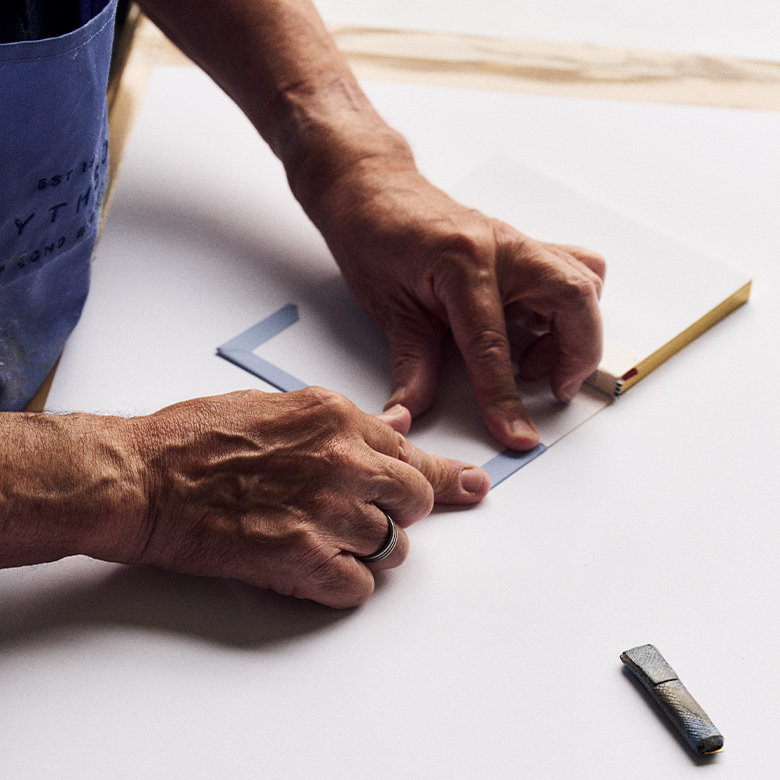
Over at the finishing benches, corresponding grosgrain ribbon page markers are secured (from a stock of over 350 colours), and silk pockets are added. Affixing the pages into the leather cases is one of the most technical parts; each one must be precisely aligned and glued in exactly the right position – any faults here would result in a diary that will not pass our rigorous quality control.
Some stages rely on modern tools, while others still use machines that are over a century old, including a few dating back to the 1950s. Each is meticulously maintained and cared for daily, a testament to the skill and attention of the artisans who operate them. While materials have evolved to meet contemporary standards, the fundamental methods remain largely unchanged since the first Smythson diary was made more than a hundred years ago. Through every stage, the same care, precision, and tradition continue to shape each diary, preserving over a century of Smythson’s craft.
